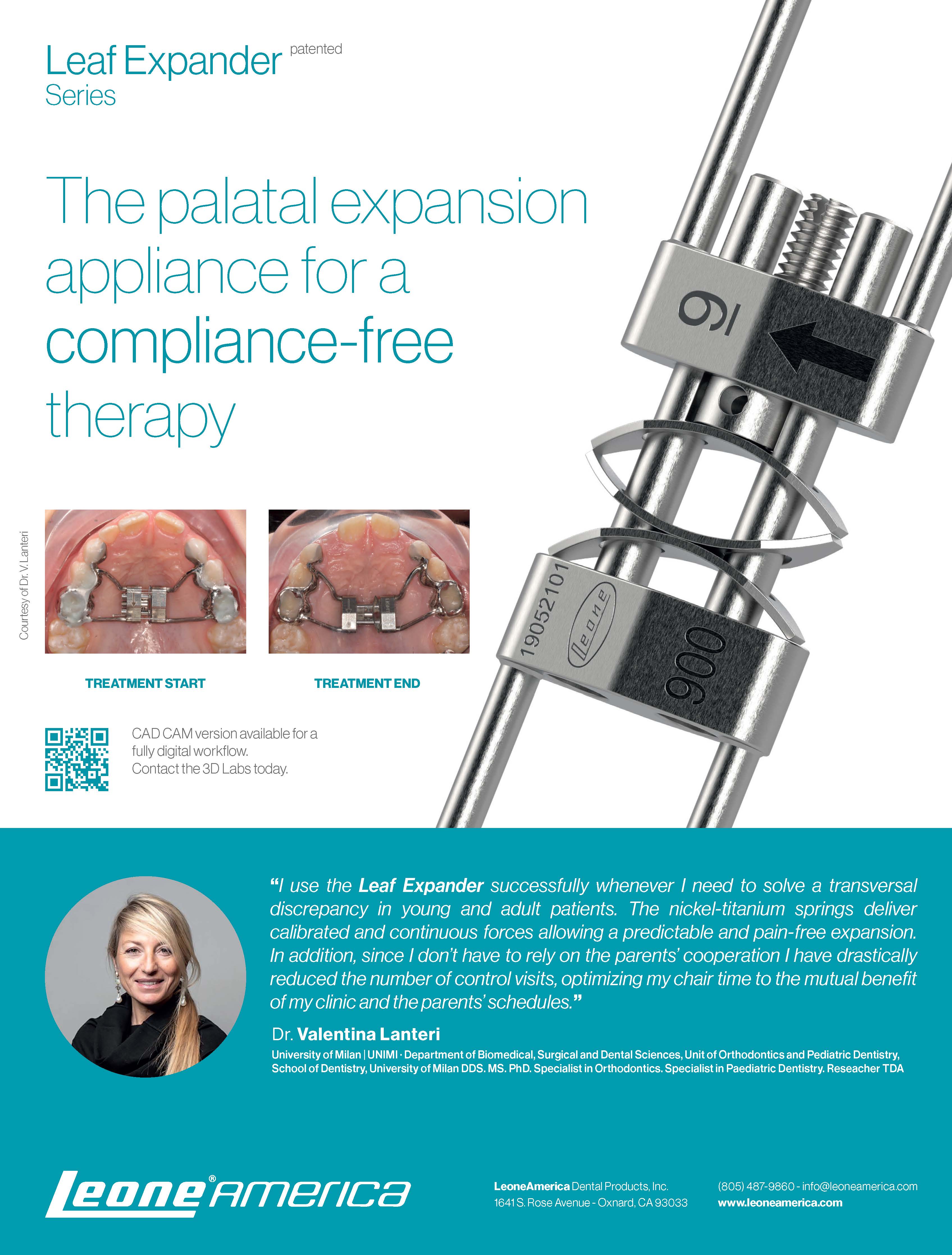Ankyloglossia, otherwise known as “tongue tie” (TT), is an innate condition in which a short lingual frenulum restricts the tongue’s normal range of motion. The corrective procedure for a TT is a lingual frenotomy, which is usually performed with surgical scissors or a diode laser. In the past 25 years, there has been an astronomical rise in the diagnosis and treatment of TT. Of particular concern for orthodontists is the recent attention being paid to the controversial posterior tongue tie (PTT) by airway-driven dentists.
Anatomically, the lingual frenulum is a small midsagittal band of oral mucosa that extends from the floor of the mouth to the underside of the tongue. Despite what some may believe, the genioglossus—the tongue’s primary extrinsic muscle—is not involved in TT anatomy. TT is prevalent in 3-5% of U.S. children. It occurs more commonly in males, but shows no racial distinction. Furthermore, it often runs in families, with about a 20% inheritance rate. In most children, the lingual frenum becomes less prominent (i.e., moves backward) during the first six years of life, as the alveolar ridge increases in height and the deciduous teeth begin to erupt. Therefore, a TT diagnosed during a newborn’s physical examination is most likely to resolve naturally.
Although various grading systems have been developed to assess TT, including the Coryllos, Kotlow, and Hazelbaker scales, the simplest method is to describe the lingual frenulum as normal, anterior, or posterior. Anterior tongue tie (ATT) involves a lingual frenulum that extends to the tongue tip, resulting in a pathognomonic heart shape of the tongue, while PTT has a lingual frenulum located at the tongue base. PTT is detectable only by palpation, which is why it is sometimes referred to as a “hidden” TT.
Why should orthodontists be concerned about PTT? Airway-driven dentists assert that TT in general contributes to inflamed tonsils, mouthbreathing, and a lower resting position of the tongue, which causes an abnormally high-arched palate and mandibular retrognathia and can lead to the development of obstructive sleep apnea (OSA). Sadly, these sensationalized claims echo the pseudoscience of “orthotropics”—consistent with PTT’s murky diagnosis and overmedicalization.
The greatest concern with PTT release, however, is the associated surgical complications, which dentists are ill equipped to manage in their offices. Common sequelae include infection, bleeding, airway obstruction, and nerve or salivary duct damage. In a 2020 systematic review of major complications after TT release, 34 patients reported 47 complications.1 Unsurprisingly, dentists performed the greatest number of these procedures. Personally, I refuse to collaborate with dentists who perform PTT surgery.
If you are still undecided about PTT, rest assured that ENTs are as well. According to the American Academy of Otolaryngology’s 2020 clinical consensus statement, many ENTs believe that PTT “does not exist as an anatomic entity.”2 These sentiments are shared in the U.K., where PTT is “not recognized or treated within the [National Health Service] setting.”3 A prominent British ENT, Dr. Lyndsay Frazer, summarized it perfectly when she described PTT as a lucrative private industry built on a paucity of evidence.3 Make no mistake: PTT is unsubstantiated, as is TT’s role in craniofacial growth and OSA.
NDK
REFERENCES
- 1. Solis-Pazmino, P.; Kim, G.S.; Lincango-Naranjo, E.; Prokop, L.; Ponce, O.J.; and Truong, M.T.: Major complications after tongue-tie release: A case report and systematic review, Int. J. Pediat. Otorhinolaryngol. 138:110356, 2020.
- 2. Messner, A.H.; Walsh, J.; Rosenfeld, R.M.; Schwartz, S.R.; Ishman, S.L.; Baldassari, C.; Brietzke, S.E.; Darrow, D.H.; Goldstein, N.; Levi, J.; Meyer, A.K.; Parikh, S.; Simons, J.P.; Wohl, D.L.; Lambie, E.; and Satterfield, L.: Clinical consensus statement: Ankyloglossia in children, Otolaryngol. Head Neck Surg. 162:597-611, 2020.
- 3. Fraser, L.; Benzie, S.; and Montgomery, J.: Posterior tongue tie and lip tie: A lucrative private industry where the evidence is uncertain, BMJ 26:371, 2020.



COMMENTS
.